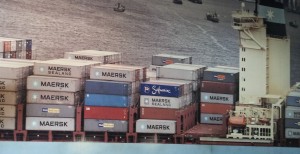
The DHL Global Connectedness Index 2014 report, prepared by a research team led by Pankaj Ghemawat – a colleague of mine at IESE Business School – has been published. Global connectedness refers to “the depth and breadth (geographic distribution) of a country’s integration with the rest of the world as manifested by its participation in international flows of products and services, capital, information and people.” The table below shows the ranks and scores of sub-Saharan and southern African countries included in the Index. Before looking at the table, here are some reference points:
- Most connected country: The Netherlands (rank 1, score 89)
- Least connected country: Syrian Arab Republic (rank 140, score 6)
- USA: rank 23, score 64
- Spain: rank 24, score 63
| COUNTRY | RANK* | SCORE** | COUNTRY | RANK* | SCORE** |
| Nigeria | 38 | 56 | Cameroon | 115 | 29 |
| Mauritius | 46 | 52 | Namibia | 116 | 28 |
| D. R. of Congo | 53 | 51 | Mali | 117 | 27 |
| South Africa | 54 | 51 | Uganda | 121 | 25 |
| Ghana | 55 | 50 | Zimbabwe | 122 | 25 |
| Gabon | 77 | 43 | Botswana | 126 | 24 |
| Ivory Coast | 78 | 43 | Burkina Faso | 128 | 23 |
| Ethiopia | 85 | 40 | Zambia | 129 | 23 |
| Angola | 94 | 38 | Niger | 132 | 19 |
| Mozambique | 98 | 37 | Rwanda | 133 | 19 |
| Madagascar | 103 | 35 | Benin | 136 | 17 |
| Kenya | 106 | 34 | Burundi | 137 | 15 |
| The Gambia | 110 | 31 | Central African Republic | 139 | 8 |
| Senegal | 112 | 31 |
* Lower ranks indicate higher global connectedness, ** Scores range from 1 to 100; country links will take you to Jose-Pedro Martinez’ Linkedin page: he has wonderful insights about some African countries!
Not surprisingly, Africa appears as the least connected region. Maybe more surprisingly, Nigeria is among the top 50 countries. In fact, Nigeria is a fashionable high-growth country. An important element contributing to Nigeria’s connectedness is international trade trade. Merchandise exports account for 35% of GDP while imports for 20%. In the case of services trade, these are 1% and 7% respectively. Unfortunately, 95% of Nigeria’s exports are based on oil and its derivatives. If you want to know why I say “unfortunately,” take a look at a previous post on Nigeria’s post-colonial impoverishment and another explaining why there’s oil scarcity in an oil-rich country.
Also of note is that the top 10 countries in terms of gain in connectedness in the period 2011-2013 include :
- Burundi: the gain comes from an increased global distribution of its merchandise exports, with its top three export destinations accounting for 59% in 2011 and for only 32% in 2013.
- Mozambique: the gain comes from an increased trade volume relative to its GDP. Its services exports went from 5% of GDP to 10%.
- Madagascar: its merchandise exports destined for the world’s largest import markets, the United States and China, both increased over that period; and
- Ivory Coast: its merchandise imports went up from 28% of GDP to 46%.
Any thoughts on these ranks or scores?


My thoughts:
1. African countries without access to the ocean are at a distinct disadvantage.
2. I didn’t expect DR Congo to be ranked so highly.
Thanks for your comment, Brian. I agree to both points. I looked at the report on Congo more carefully. It seems that an important element of its connectedness is the depth of its merchandise exports. which acount for 71% of its GDP. The main export products are petroleum, lumber, plywood, sugar, cocoa, coffee, and diamonds.